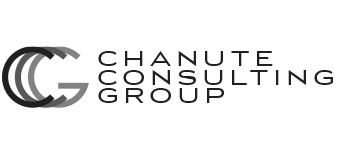Meaningful Differentiation – The common goal for both Strategy and Innovation
A good Strategy is critical to creating a successful business. Likewise, Innovation plays a key role in the long term success of most profitable businesses.
However, neither Strategy or Innovation are an end in themselves. Both are methods for achieving something far more important: Meaningful Differentiation.
Meaningful Differentiation occurs when customers see a worthwhile difference between your products/services/brands and those of your competitors. This differentiation can occur through a strategy that creates a new value proposition for your customers. It can also occur if you create innovative products that deliver more value to your targeted customers than your competitor’s products. Often the best companies use a combination of Strategy and Innovation to Meaningfully Differentiate themselves.
We see many examples where Meaningful Differentiation results in long-term sustainable profitable results. Southwest Airlines is a great example. Southwest follows a different strategy than its competitors by flying one type of plane, avoiding hub and spoke operations, minimizing add-on fees, and focusing on efficiency. They also encourage innovative ideas from their employees to perpetuate their strategic advantages in cost and customer service. The result is an airline that over the long term has been more profitable than all of their US competitors combined. The reason for this outstanding performance is that they have used Strategy and Innovation to achieve Meaningful Differentiation in the eyes of their customers.
Apple is another great example of Meaningful Differentiation. Their strategy of creating a closed system of hardware and software (OS) is different than their competition. Their product innovations with design, new product categories, and more useable user interfaces; have all further differentiated Apple from its competitors. The combined result of their Strategy and Innovation is Meaningful Differentiation, and it has driven outstanding results.
In each of these examples, the past performance of Apple and Southwest are no guarantee that they will continue to be Meaningfully Differentiated in the future. However, clearly both companies have demonstrated the ability to achieve this goal for a sustained period of time, despite being in very competitive markets with numerous commoditized competitors surrounding them.
Often we hear debates on whether a company truly has a good Strategy or whether their products are really Innovative. The real litmus test for both, is whether it can be said that the company has achieved Meaningful Differentiation. If the goal is achieved, then long term profitability will follow. Debating whether their Innovations are “breakthrough enough” or if their strategy has a unique enough value proposition is missing the point. If the end result is a clear Meaningful Differentiation in the eyes of the customer, then the important goal has ben achieved. If on the other hand, the company and its products are commoditized (like the major US airlines or the majority of computer manufacturers) then it is irrelevant how “breakthrough” their Innovations seemed or how unique their Strategy appeared.
Focusing on Strategy and Innovation is important for business leaders. However, we must all remember that neither of these is an end in itself. As we refine strategies and strive for innovative products, we must always measure the results on a scale that ranges from Commoditization up to Meaningful Differentiation. Those who differentiate meaningfully will survive. Those who do not, will find themselves in a dangerous place.
Meaningful Differentiation is the goal. Strategy and Innovation create a path to reach the goal.
